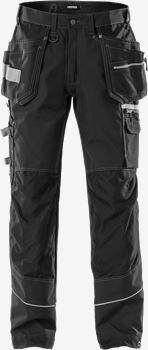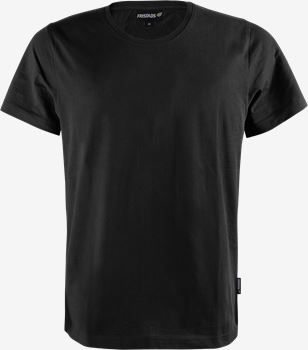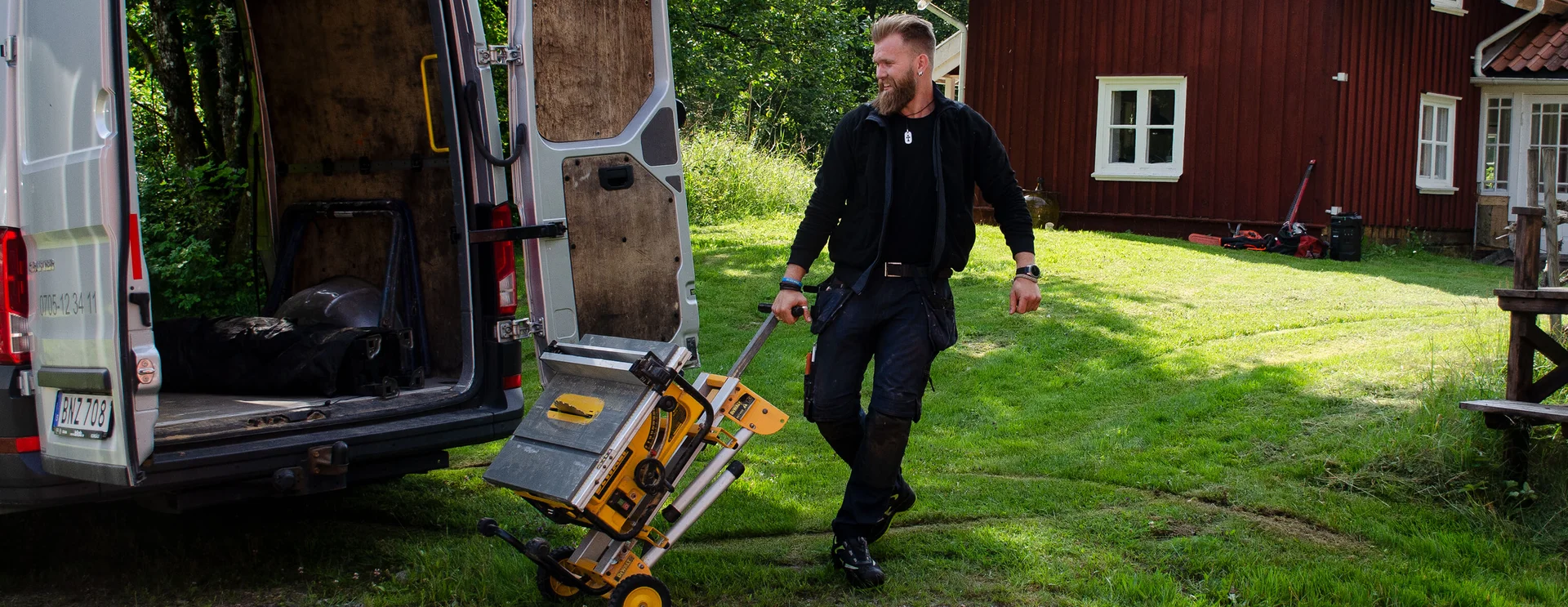
Carpenter who puts garments to the test
With all due respect to laboratory trials, but it is when Fristads’ new garments are tried in the field by real users that design, function and materials are really put to the test. Carpenter Sakarias Sigfridsson is one of the selected users who help with Fristads’ product development - and he is a discerning test pilot. “The most important thing is that the garment functions well,” he says.
Sakarias Sigfridsson works as a carpenter for Magne Bergs Bygg in Borås, Sweden, and was asked to participate in Fristads’ user trials three years ago. It was the craftsman trouser 2596 LWS in lightweight stretch material that needed tested in the field before the design could be finalised. “I thought it sounded fun to try something new and see what is going on in the industry,” Sakarias says about the reasons why he wanted to be a part of Fristads’ user trials.
The first pair of trousers were soon followed by more, and he has also had the opportunity to try a t-shirt, sweatshirt and jacket. Usually, Sakarias tests the garment for a few months before he gets to answer questions from Fristads’ product department about the trial. They may ask for his opinions about the design, the material and functions, and how well he thought the garment stood up against the wear and tear it was subjected to. The product department wants honest, unfiltered feedback. “I’ve been pretty harsh sometimes and rejected some things, but I think it’s appreciated. That’s the most useful type of feedback,” Sakarias says.

With all due respect to laboratory trials, but it is when Fristads’ new garments are tried in the field by real users that design, function and materials are really put to the test. Carpenter Sakarias Sigfridsson is one of the selected users who help with Fristads’ product development - and he is a discerning test pilot. “The most important thing is that the garment functions well,” he says.
Sakarias Sigfridsson works as a carpenter for Magne Bergs Bygg in Borås, Sweden, and was asked to participate in Fristads’ user trials three years ago. It was the craftsman trouser 2596 LWS in lightweight stretch material that needed tested in the field before the design could be finalised. “I thought it sounded fun to try something new and see what is going on in the industry,” Sakarias says about the reasons why he wanted to be a part of Fristads’ user trials.
The first pair of trousers were soon followed by more, and he has also had the opportunity to try a t-shirt, sweatshirt and jacket. Usually, Sakarias tests the garment for a few months before he gets to answer questions from Fristads’ product department about the trial. They may ask for his opinions about the design, the material and functions, and how well he thought the garment stood up against the wear and tear it was subjected to. The product department wants honest, unfiltered feedback. “I’ve been pretty harsh sometimes and rejected some things, but I think it’s appreciated. That’s the most useful type of feedback,” Sakarias says.
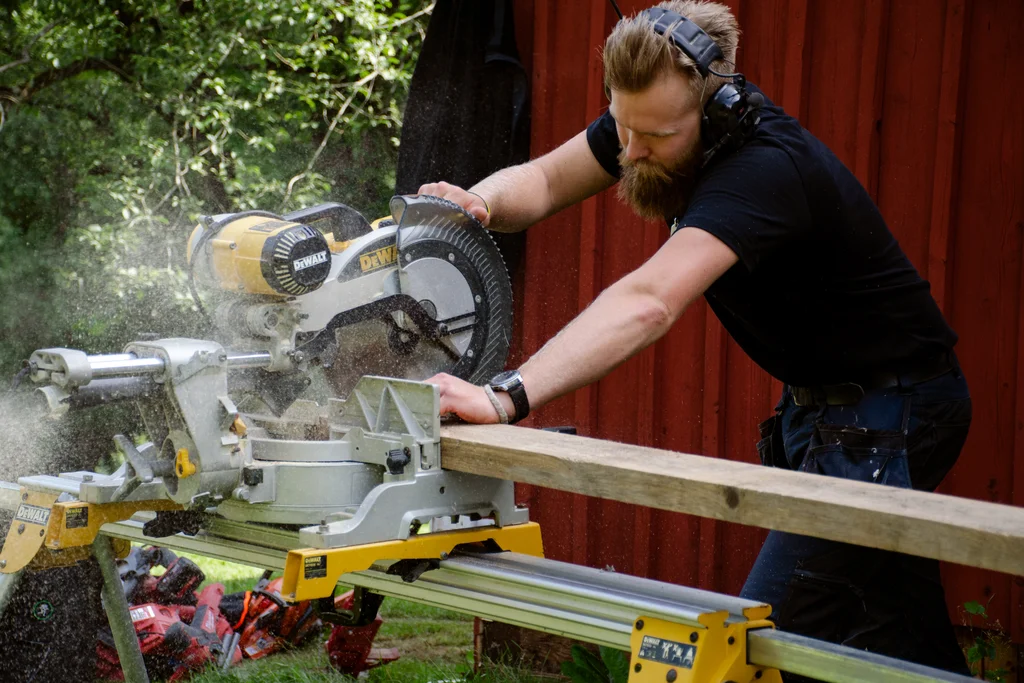
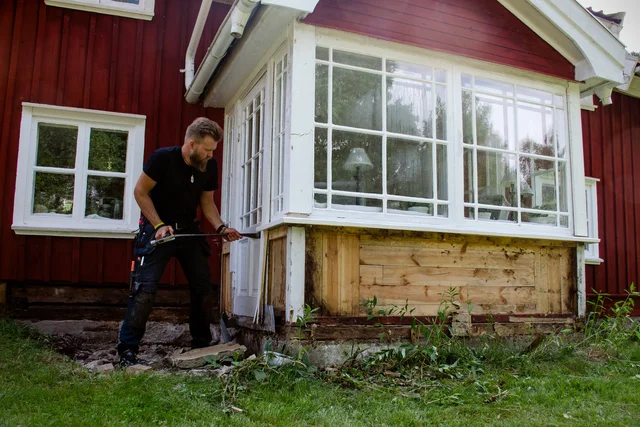



Sakarias has worked as a carpenter since 2013 and has been with his current employer since 2016. Even though he has always been a bit of an omnivore when it comes to workwear, he has developed certain preferences over time.
"The functionality is the most important aspect – to have the right type of pockets and have them in the right places. The material is also important. The trousers should fit well; you should be able to move around easily and take big strides without them feeling tight. If they look good, that’s a bonus, but it’s not the most important part.”
Sakarias is especially opinionated about the pockets. They can’t be too small, since it is important that it fits the whole hand. Nor can they be too “flappy,” rather they should hold fairly still, according to Sakarias. The pocket on the right-hand side should have a classic design with three smaller pockets, and on the left side he prefers to have a zippered pocket for bits and other odds and ends. Plus, he likes having a generously sized phone pocket, preferably with a zipper to keep out dust.
“The folding rule pocket should also be spacious and can’t sit too low, or it will hit the ground when you’re on your knees. Those are exactly the kind of things that bug you when you’re working all day. I also like having a hammer loop but not all trousers have them anymore.”
Sakarias has worked as a carpenter since 2013 and has been with his current employer since 2016. Even though he has always been a bit of an omnivore when it comes to workwear, he has developed certain preferences over time.
"The functionality is the most important aspect – to have the right type of pockets and have them in the right places. The material is also important. The trousers should fit well; you should be able to move around easily and take big strides without them feeling tight. If they look good, that’s a bonus, but it’s not the most important part.”
Sakarias is especially opinionated about the pockets. They can’t be too small, since it is important that it fits the whole hand. Nor can they be too “flappy,” rather they should hold fairly still, according to Sakarias. The pocket on the right-hand side should have a classic design with three smaller pockets, and on the left side he prefers to have a zippered pocket for bits and other odds and ends. Plus, he likes having a generously sized phone pocket, preferably with a zipper to keep out dust.
“The folding rule pocket should also be spacious and can’t sit too low, or it will hit the ground when you’re on your knees. Those are exactly the kind of things that bug you when you’re working all day. I also like having a hammer loop but not all trousers have them anymore.”
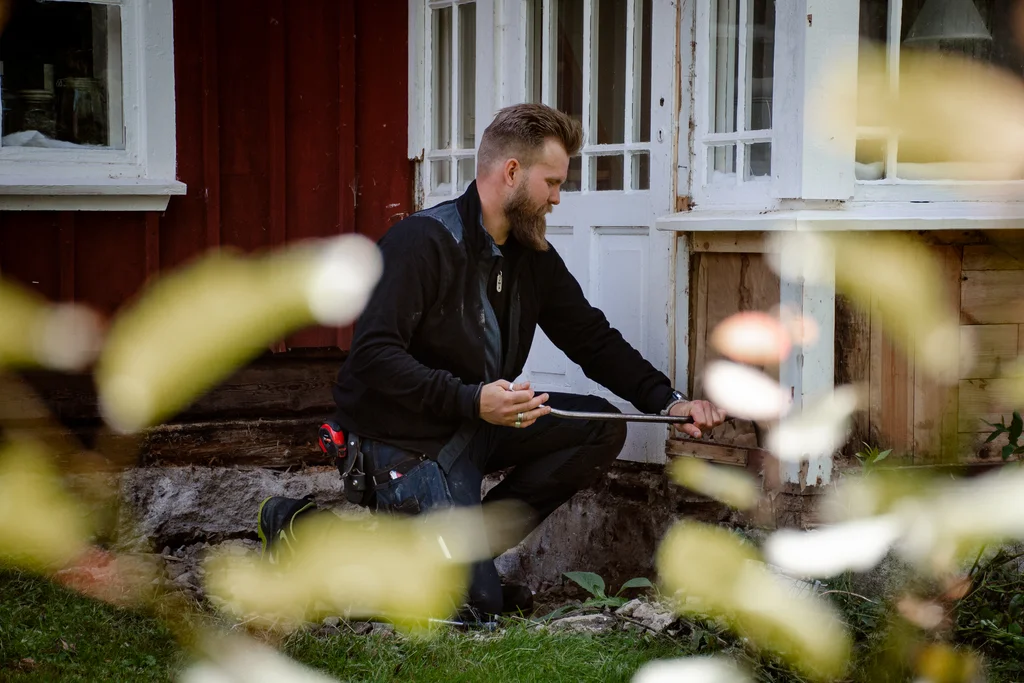

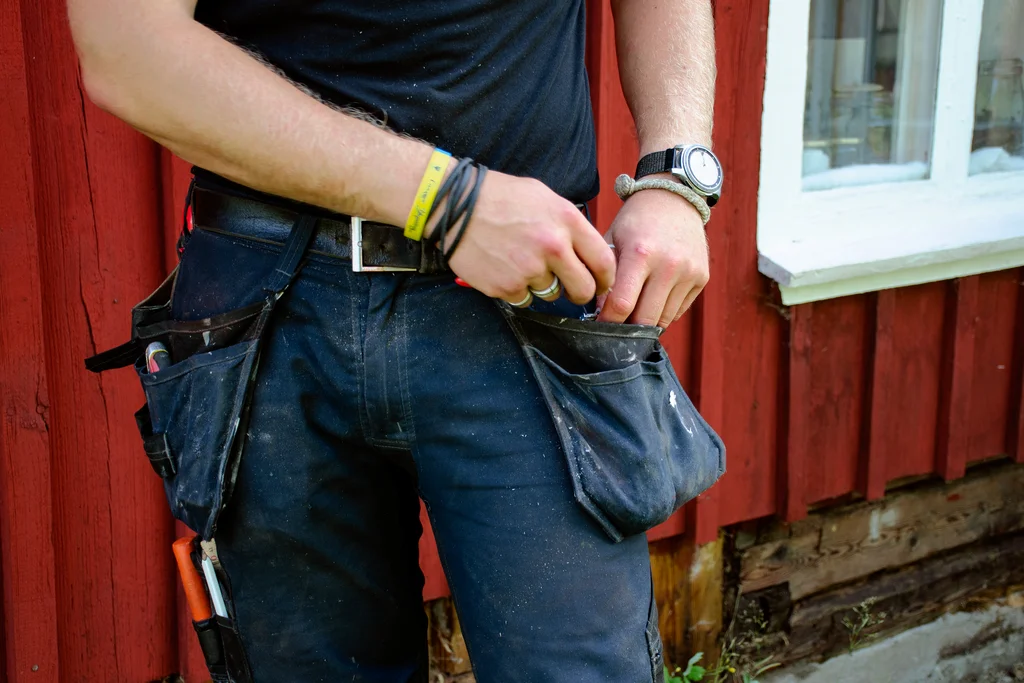


All Fristads clothes are tested by users before they go into production, but the process may vary slightly depending on the garment. If it is a matter of a new product, a new material or new functions, for example a detachable nail pocket, the tests are more thorough than when a new pair of pirate trousers are developed based on an existing pair of trousers. Recently, many garments have been tested because the material has been swapped for a more sustainable alternative, for example recycled polyester. The user trials are a way for Fristads to ensure that the quality and durability of the garment are not negatively affected by the change of material, along with laboratory and industrial laundry tests.
The user trials take place at the final stages of a rigorous product development process. This is what the process looks like, step by step:
- Fristads’ product development department talks to stakeholders in different industries to see what their needs are and whether there are any opportunities for development. Among other things, they look at the tools that are used and which functions the user needs in everyday life.
- The product development team assigns the task of developing a new garment to the design department and specifies which needs must be met. The assignment may encompass a single garment for a specific profession or an entire collection for a wider target group.
- Fristads’ designer draws sketches and enters them into a 3D tool to create a virtual garment sample. Changes can be made straight in the digital prototype, so that the designer can see how the fit is affected if a seam is changed or a pocket is added.
- Fristads creates samples that are sent out to the test pilots. Sometimes they get different versions of the garment, to test if a certain function should be included or not.
- When the trial period is up, the product development team contacts the test pilots to collect feedback on the garment. Sometimes, Fristads’ team members meet up with the users at the workplace to see the garment in use.
- Based on the user trials and other tests, the garments are modified accordingly.
- When all the modifications have been made and samples of the new garment have been approved, it is ready for production.
All Fristads clothes are tested by users before they go into production, but the process may vary slightly depending on the garment. If it is a matter of a new product, a new material or new functions, for example a detachable nail pocket, the tests are more thorough than when a new pair of pirate trousers are developed based on an existing pair of trousers. Recently, many garments have been tested because the material has been swapped for a more sustainable alternative, for example recycled polyester. The user trials are a way for Fristads to ensure that the quality and durability of the garment are not negatively affected by the change of material, along with laboratory and industrial laundry tests.
The user trials take place at the final stages of a rigorous product development process. This is what the process looks like, step by step:
- Fristads’ product development department talks to stakeholders in different industries to see what their needs are and whether there are any opportunities for development. Among other things, they look at the tools that are used and which functions the user needs in everyday life.
- The product development team assigns the task of developing a new garment to the design department and specifies which needs must be met. The assignment may encompass a single garment for a specific profession or an entire collection for a wider target group.
- Fristads’ designer draws sketches and enters them into a 3D tool to create a virtual garment sample. Changes can be made straight in the digital prototype, so that the designer can see how the fit is affected if a seam is changed or a pocket is added.
- Fristads creates samples that are sent out to the test pilots. Sometimes they get different versions of the garment, to test if a certain function should be included or not.
- When the trial period is up, the product development team contacts the test pilots to collect feedback on the garment. Sometimes, Fristads’ team members meet up with the users at the workplace to see the garment in use.
- Based on the user trials and other tests, the garments are modified accordingly.
- When all the modifications have been made and samples of the new garment have been approved, it is ready for production.
Name: Sakarias Sigfridsson
Age: 28
Lives: Tvärred, Sweden
Works: Magne Bergs Bygg, Borås
In the spotlight: Garment test pilot for Fristads
Favourite Fristads garment: “I think the craftsman trousers 2122 CYD are great; I’ve bought them several times.”
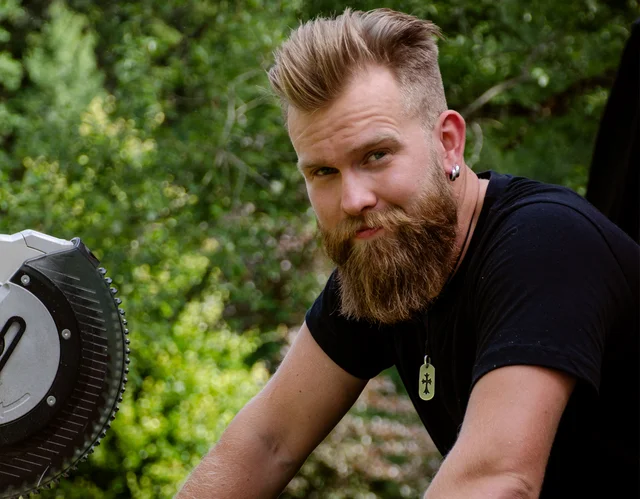

Name: Sakarias Sigfridsson
Age: 28
Lives: Tvärred, Sweden
Works: Magne Bergs Bygg, Borås
In the spotlight: Garment test pilot for Fristads
Favourite Fristads garment: “I think the craftsman trousers 2122 CYD are great; I’ve bought them several times.”

Age: 28
Lives: Tvärred, Sweden
Works: Magne Bergs Bygg, Borås
In the spotlight: Garment test pilot for Fristads
Favourite Fristads garment: “I think the craftsman trousers 2122 CYD are great; I’ve bought them several times.”

